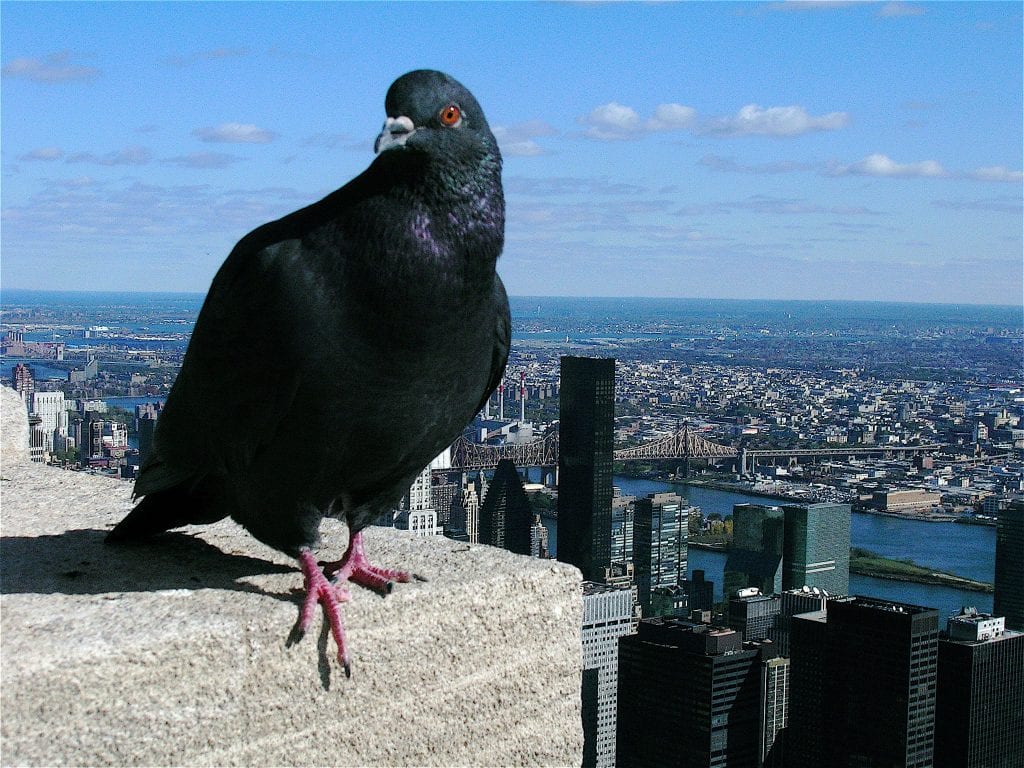
Credit: Jennifer Morrow, https://www.flickr.com/
Wildlife in New York City. It sounds like an oxymoron, but every year, concerned New Yorkers find thousands of injured animals lying on the sidewalk. They take to Google and end up at the only wildlife rehabilitation center in NYC – the Wild Bird Fund. I was one of those people.
In 2009, two children brought a sparrow into the dog & cat clinic that I worked at. The bird wasn’t putting any weight on its right leg. After my shift was over, I made the two-hour subway ride to the Upper West Side and stepped through the front door of the Wild Bird Fund. Hens roamed freely in the lobby. A gull honked from its perch on the chair next to me. Mourning doves cooed from huge window aviaries, and a rehab worker bustled by cradling a swan, one hand supporting its long neck. I was instantly hooked. The very next week, I attended orientation to become a volunteer.
Although the Wild Bird Fund accepts all animals, more than half of its patients belong to just one species. It’s the most commonly sighted animal in New York City – the infamous pigeon, Columba livia, or, “rat with wings”. There are over a million in NYC alone. That means thousands of sick pigeons arrive at the Wild Bird Fund every year. After volunteering for a while, I became interested in learning more about lead poisoning, one of the most common ailments among our patients.
For my undergraduate senior thesis project, I decided to compile all of the blood lead levels for pigeons measured at the Wild Bird Fund from 2011 onwards. Then, I mapped these results across different neighborhoods in NYC. Sorting through and geolocating thousands of hand-written records took me the better part of an entire summer. Turns out it wasn’t in vain – I found consistently high levels of lead poisoning in small pockets of the city, areas such as Lower Manhattan and the Gowanus Canal in Brooklyn. My results also matched child lead poisoning reports published by the US Department of Health in 2010 and 2014. Sick children and sick pigeons live in the same neighborhoods.
It’s still unclear where this lead is coming from, although it’s most likely a combination of several different sources, including leaded paint, leaded gasoline, and small airplane fuel. The Wild Bird Fund data also revealed another trend: lead poisoning is significantly higher in the summer. This correlates with lead poisoning studies done on human children; Laidlaw et al. (2005) suggest that soil humidity is lower in the summer, leading to increased suspension of and exposure to lead dust.
In the end, it’s hard to look past some of the similarities between human and animal pathology, especially when we live in the same neighborhoods, breathe the same air, and eat the same food. (If you’ve never seen a pigeon chowing down on a discarded pretzel, have you truly seen New York City?) Mine is just one of many studies being published every year about human-ecosphere interaction. One emerging field involves the use of animals as bioindicators for human health. The bioindicator is the proverbial canary in the coal mine; if the wildlife falls ill, we may expect humans to fall ill as well.
Just like any other time science happens, I submitted my paper with more questions than I had answers. Wildlife is suffering, and it is by no uncertain terms our doing. It’s hard not to notice this when three of the most common problems treated at the Wild Bird Fund are lead poisoning, collision with windows, and cat attacks. Shortly after my study was published in Chemosphere, it was picked up by The New York Times and a slew of other online papers. In particular, The New York Times debated the true efficacy of predicting human disease using pigeon lives. As I read the news article, my heart sank.
I’d written a paper on pigeon health, but I was getting the impression that very few people cared if it didn’t have immediate applications to human medicine. It wasn’t entirely their fault — I had, after all, dedicated many pages of my study to drawing comparisons between pigeon and human child lead toxicity. But as accurate as these comparisons were, I’d done them in part because I hadn’t been confident that anyone would notice a study on just pigeon lead poisoning. I thought my results were important, and I wanted them to be published; writing about human medicine would help that process.
It’s not that I don’t care about human medicine — far from it. We should raise our voices, loudly and clearly, when a human is poisoned. And we should raise our voices, loudly and clearly, when an animal is poisoned as well. Lead toxicity or otherwise, it’s becoming more and more obvious that connections between human and animal health exist everywhere we turn. I guess this is a call to everyone to care just a bit more about what happens to the life that we’re surrounded by: the earthworms tunneling underfoot, the warblers migrating south, and yes, maybe that pigeon strutting past too, even if it just pooped on your windshield.
The paper published from Fayme’s research can be found here. Click here to read the New York Times article about it.

ABOUT THE AUTHOR:
Fayme Cai, class of 2022, was born and raised in NYC and graduated from Columbia University with a Bachelor’s in Ecology & Evolution and a minor in Psychology. Although it’s still up in the air for now, she’s mostly interested in small animal and companion exotic animal medicine.





